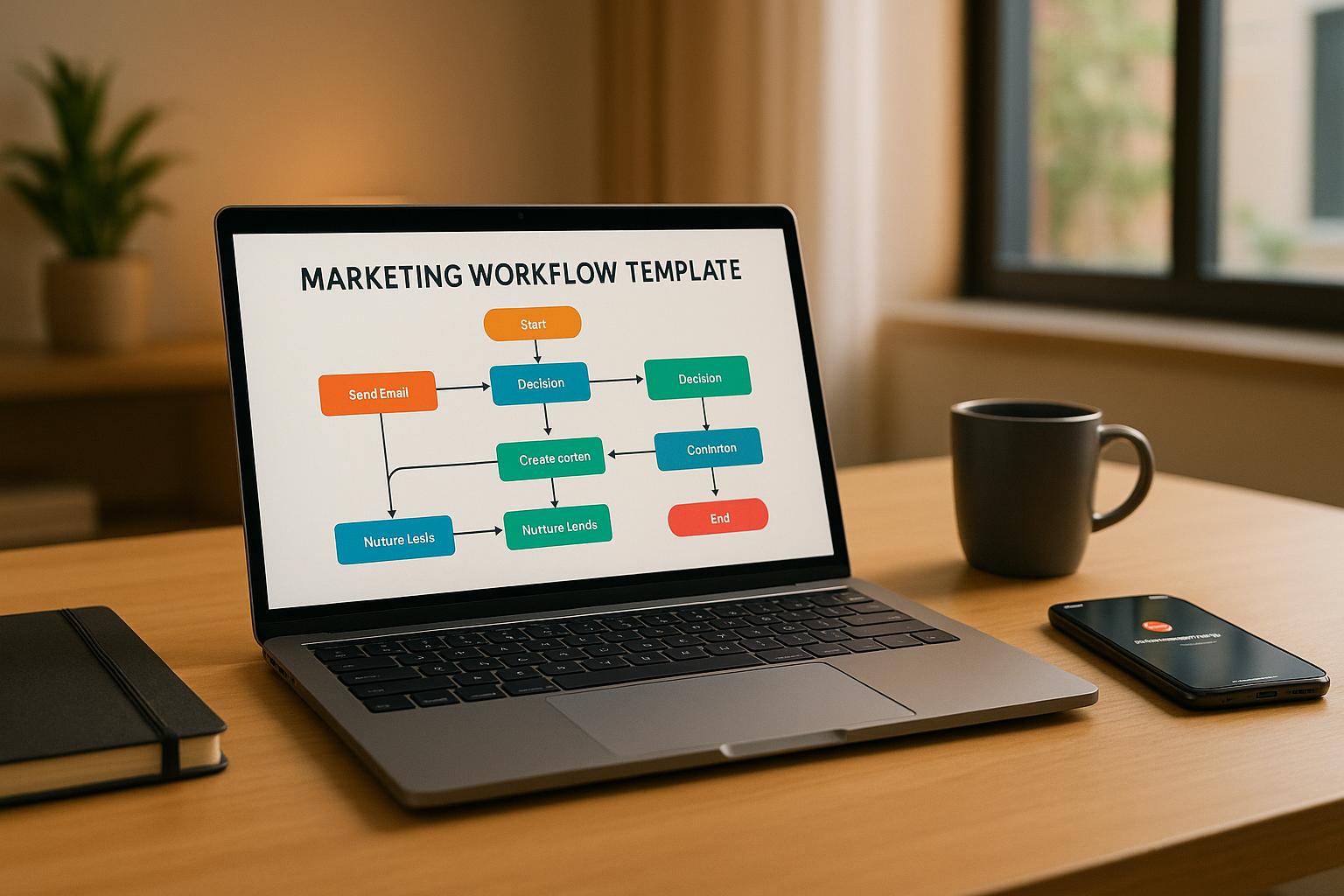Building a personal brand in real estate is essential to stand out and attract clients. Here’s a quick guide to get started:
- Choose Your Market Focus: Identify your ideal clients and specialize in a niche like luxury homes, first-time buyers, or investment properties.
- Create Your Market Position: Highlight your unique strengths and align them with client needs, like offering tailored property recommendations or simplifying transactions.
- Master Social Media Marketing: Use platforms like Instagram, LinkedIn, and YouTube to showcase properties, share insights, and connect with your audience.
- Build Your Digital Presence: Launch a professional website with features like virtual tours, client testimonials, and a blog for market updates.
- Grow Your Network: Attend local events, engage in online groups, and maintain consistent follow-ups to expand your connections.
- Share Your Expertise: Publish market reports, property tours, and educational content to establish yourself as a trusted authority.
- Keep Your Brand Consistent: Maintain uniform visuals, messaging, and communication across all platforms to build trust and recognition.
Building Your Personal Brand as a Realtor: 7 Powerful Steps …
Step 1: Choose Your Market Focus
Choosing a specific market focus is the starting point for building your real estate brand. By concentrating on a particular segment, you position yourself as a specialist, which helps you stand out and attract the right clients.
Understand Your Ideal Client
To attract quality leads, you need to define your ideal client. Think about these factors when building their profile:
- Demographics: Age, income, family status, and other personal details
- Property Preferences: Desired price range, location, and property type
- Challenges: Common issues they face in the real estate process
- Communication Style: How they prefer to communicate and how often
With a clear client profile, you can craft messages that speak directly to their needs. For instance, if you specialize in luxury homes, focus on exclusivity and high-end services. If your audience includes first-time buyers, provide guidance and educational resources to simplify the process.
Pick Your Specialty
Once you know your ideal client, narrow your focus further by selecting a specific property type or market segment. Here are some common specialties:
| Specialty Type | Target Market | Focus Areas |
|---|---|---|
| Luxury Homes | High-income buyers | Exclusive listings, premium features |
| First-time Buyers | Young professionals | Financing help, educational resources |
| Investment Properties | Real estate investors | ROI analysis, market insights |
| Urban Condos | City professionals | Convenience, urban lifestyle |
| Vacation Homes | Second-home buyers | Seasonal trends, rental opportunities |
To succeed in your specialty, make sure you:
- Research local market trends and opportunities
- Gain certifications or training relevant to your niche
- Build connections with other professionals in your segment
- Create content that showcases your expertise in the area
Step 2: Create Your Market Position
Carve out a position in real estate that makes you stand out. Focus on aligning what you’re good at with what your clients need most.
Match Your Skills to Client Needs
| Client Challenge | Positioning Solution | Value Delivered |
|---|---|---|
| Finding Quality Properties | In-depth market analysis | Tailored property recommendations |
| Understanding Market Trends | Consistent market updates | Smarter buying decisions |
| Property Valuation | Advanced pricing tools | Precise property assessments |
| Transaction Complexity | Simplified processes | Hassle-free buying/selling |
| Investment Guidance | Expertise in ROI analysis | Improved investment outcomes |
Focus on simplifying the process for first-time buyers and showcasing exclusive opportunities for luxury clients. The next step is to make your approach stand out.
Highlight Your Key Differences
Showcase what sets your services apart to attract the right clients:
-
Specialized Knowledge
Develop deep expertise in your niche by staying on top of market trends and identifying new opportunities. -
Service Approach
Offer a service model that directly addresses your clients’ challenges. For example, one real estate agency owner shared:"Working with Growth Realty has been an absolute turnaround for us. Their ability to generate leads that actually turn into buyers is unmatched. I was blown away by how quickly my listings gained traction, and the personalized attention they gave me was refreshing. If you’re serious about growing your business, they’re the ones to call." – Dr. Eran E., Real Estate Agency Owner
-
Technology Integration
Incorporate tools like virtual tours, AI-driven market analysis, digital transaction management, and automated communication to enhance the client experience.
Step 3: Master Social Media Marketing
Once you’ve established your market focus and unique value, social media becomes a powerful tool to expand your reach. A well-thought-out social media strategy can help you connect with your audience and grow your presence.
Choose the Right Platforms
Each social media platform serves a different purpose. Here’s how you can use some of the major ones:
- Instagram: Perfect for showcasing property photos and virtual tours.
- LinkedIn: Share professional updates and market insights to connect with industry peers.
- Facebook: Engage with your community and highlight local trends.
- YouTube: Offer detailed property walkthroughs and area guides.
Once you’ve selected your platforms, focus on creating content that aligns with your brand’s voice.
Plan a Balanced Content Strategy
Your content should be a mix that highlights properties, shares market updates, features client testimonials, and strengthens your personal brand. For instance, Growth-Realty helped a leading real estate marketplace triple its organic traffic within two months by using a strategic content approach.
Establish a Consistent Posting Schedule
Consistency is key. Here’s a simple posting routine to keep your audience engaged:
- Daily: Share quick market insights or property highlights using scheduling tools.
- Weekly: Post detailed market analysis or neighborhood guides.
- Monthly: Run themed campaigns tied to seasonal trends or events. For example, a brokerage that maintained a regular posting schedule reported an 80% increase in organic leads [2].
sbb-itb-2f9da9d
Step 4: Build Your Digital Presence
Your online presence plays a key role in shaping your real estate brand. A well-thought-out digital strategy can help you expand your reach and establish trust in today’s competitive market.
Launch Your Website
Create a website that highlights your expertise and listings. Make sure it includes these essential features:
- Portfolio: High-quality photos and concise property details.
- About Section: A compelling summary of your skills and what sets you apart.
- Client Testimonials: Real feedback from satisfied clients.
- Clear Contact Information: Easy ways for potential clients to reach you.
- Blog: Share market insights and tips to engage your audience.
To streamline your client interactions, integrate a CRM system. Once your site is live, consider upgrading your digital tools for a more engaging client experience.
Add Digital Features
Take your online presence to the next level by incorporating advanced digital tools.
Virtual Property Showcases
- Include 360° virtual tours for an immersive viewing experience.
- Use AI-powered virtual staging to highlight a property’s potential.
- Offer video walkthroughs for high-end listings.
Digital Communication Tools
- Automate email campaigns to keep leads engaged.
- Use AI-driven WhatsApp chatbots to provide instant responses to inquiries.
| Digital Feature | Primary Benefit | Impact on Brand |
|---|---|---|
| 360° Virtual Tours | Better property visualization | Positions you as tech-savvy |
| AI Virtual Staging | Affordable property showcasing | Highlights your innovation |
| Email Automation | Keeps communication consistent | Reflects professionalism |
| WhatsApp Chatbots | 24/7 response availability | Enhances client service |
Step 5: Grow Your Network
Building a strong network is key to boosting your real estate brand. Every connection you make adds to your credibility and helps you stand out.
Attend Local Events
Face-to-face networking is still one of the most effective ways to connect with potential clients and industry professionals. Look for events where you can make meaningful connections:
Industry Events
- Real estate conferences and seminars
- Property showcases and open houses
- Local chamber of commerce meetings
- Professional association gatherings
Community Activities
- Neighborhood association meetings
- Local business networking mixers
- Charity fundraisers
- Community improvement projects
Always have business cards and a quick, engaging introduction ready that highlights your expertise. While in-person events are powerful, don’t overlook the reach of digital networking.
Balance Traditional and Digital Networking
Combining in-person and online efforts can maximize your networking potential. Here’s how to make the most of digital platforms:
Digital Networking Strategies
- Join LinkedIn and Facebook groups focused on real estate
- Participate in online forums related to the industry
- Share useful market updates on social media
- Engage with local community pages
Active Engagement Tips
- Leave thoughtful comments on posts
- Share insights that your audience finds useful
- Respond quickly to messages
- Stay consistent with your interactions
| Networking Method | Purpose | Follow-up Strategy |
|---|---|---|
| Industry Events | Build professional connections | Send a personal email within 48 hours |
| Community Activities | Strengthen local presence | Connect via social media |
| Online Groups | Showcase your expertise | Engage regularly |
| Virtual Meetings | Keep relationships strong | Schedule quarterly check-ins |
Use digital tools to organize your contacts and set reminders for follow-ups. This helps you stay consistent and genuine in your interactions. A well-maintained network not only strengthens your market presence but also helps you showcase your skills effectively.
Step 6: Share Your Expertise
Once you’ve built your network, it’s time to establish yourself as an authority by sharing valuable insights. Creating content that addresses your audience’s needs helps position you as a trusted expert.
Create High-Value Content
Focus on producing content that resonates with your market, such as:
- Market Analysis Reports: Include monthly neighborhood pricing trends, local market forecasts, investment opportunities, and property type comparisons.
- Visual Content: Offer property walkthrough videos, 360° virtual tours, before-and-after renovation showcases, and area highlight reels.
- Educational Resources: Develop home buying and selling guides, mortgage tips, property investment strategies, and updates on local real estate laws.
Leverage Marketing Tools
Use modern tools to get your content in front of the right audience. Here are some effective digital channels:
- Email Newsletters: Share market updates and reports.
- WhatsApp Broadcasts: Send instant alerts and quick tips.
- Social Media Platforms: Post engaging visuals and expert advice.
- Blog Posts: Regularly update your website with in-depth articles.
Here’s a quick breakdown:
| Content Type | Distribution Channel | Engagement Goal |
|---|---|---|
| Market Reports | Email Newsletter | Lead Nurturing |
| Property Tours | Social Media | Brand Awareness |
| Expert Tips | WhatsApp/Blog | Building Trust |
| Local Updates | All Channels | Becoming a Community Leader |
Automation and analytics tools can streamline your efforts. Use them to schedule posts, track engagement, monitor leads, and refine your strategy based on data.
For example, a real estate marketplace saw three times the organic traffic growth in just two months by applying Growth-Realty’s methods [2].
Stay consistent with high-quality content and regular updates to firmly establish your expertise in the market.
Step 7: Keep Your Brand Consistent
Building a strong personal brand means keeping your messaging and visuals uniform across all platforms. This uniformity helps boost trust and makes your brand easily recognizable to potential clients.
Align Your Brand Elements
Your brand’s look and feel should stay the same wherever it appears. Here’s how to apply key brand elements:
| Brand Element | Where to Apply | Purpose |
|---|---|---|
| Logo & Colors | Website, Social Media, Business Cards | Quick Recognition |
| Typography | Marketing Materials, Digital Content | Professional Look |
| Photo Style | Property Listings, Profile Pictures | Consistent Visuals |
| Voice & Tone | Client Communications, Content | Reflects Personality |
Stick to your brand guidelines for everything – logo, colors, typography, photo style, and even the tone you use. Consistency in how your brand looks and sounds reinforces your identity and makes a lasting impression.
Streamline Client Communications
Consistency isn’t just about visuals – it’s also about how you communicate. Clear and professional client interactions are a key part of your brand. Digital tools can help you stay on top of communication and maintain a polished image.
Some tips for maintaining consistent client communication:
- Automate Updates: Use automated email campaigns to share market updates, new listings, or follow-ups.
- Leverage CRM Tools: Track client interactions and respond promptly to inquiries.
- Add Chat Tools: Use instant messaging to ensure quick and reliable responses.
Regularly review your brand presence to make sure everything stays aligned with your guidelines. Check your social media profiles, website content, marketing materials, client communication templates, and property listing presentations to ensure they all reflect your brand accurately. Small inconsistencies can dilute your message, so stay vigilant!
Conclusion
Creating a personal brand in real estate is all about forming meaningful connections that drive success. By implementing these seven steps, you’re setting the stage for standing out in your market.
Start by identifying your niche, then work on growing your online presence while staying consistent across all channels. Building a strong personal brand in real estate takes time and effort – each step you take adds to a solid foundation for long-term success.



